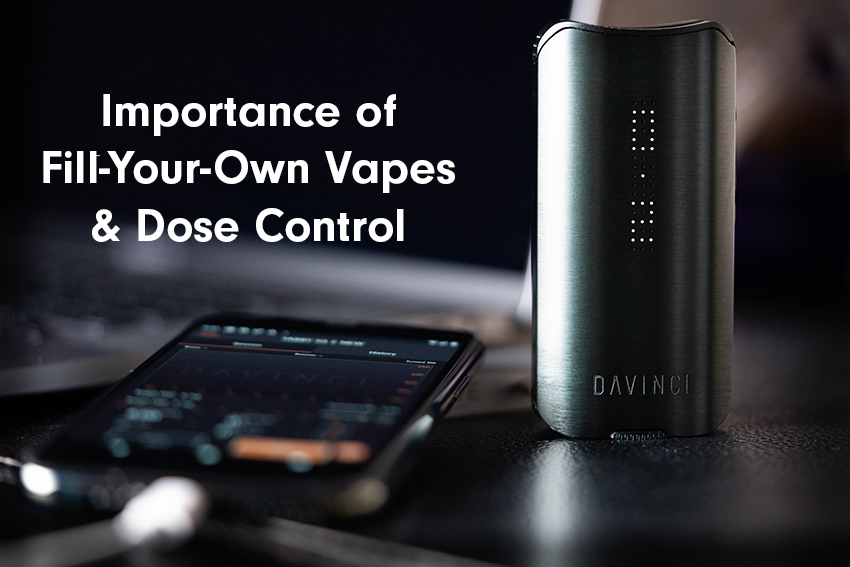
Before COVID-19, there was VALI.
In the summer of 2019, reports began circulating of patients showing up in emergency rooms with mysterious and extremely serious breathing problems. Almost all of them were young and otherwise healthy, yet their lungs were scarred, overwhelmed with an oily froth, or failing altogether.
And all of them vaped.
The outbreak of “ e-cigarette, or vaping, product use-associated lung injury ,” or VALI (aka EVALI), claimed 68 lives in the United States as of February 2020. Another 2,739 people were hospitalized, according to the federal Centers for Disease Control and Prevention, which published its last update on vape-lung cases on Feb. 25, 2020—which was right around when another, far more serious lung issue started gaining attention across the world.

It almost feels quaint in the context of the novel coronavirus pandemic, but there were a few moments last fall when it felt like vaporizing was done for. Crisis certainly triggered swift and significant change: Nicotine vape giant Juul yanked certain flavor pods from store shelves. Lawmakers demanded the federal Food and Drug Administration regulate the products.
Sales of vaporizer cartridges in legal cannabis dispensaries dropped as the CDC recommended users halt all vaping, while a cause or a source of the lung ailments could be found.
Hidden in the confusion and hysteria was the fact that there was safe vaping all along. For users of certain vaporizer products, the crisis hardly registered; there was never much risk. Early reports that the likely culprit was harmful additives in bootleg vaporizer oil were confirmed by later medical research . But as per medical journals and the CDC, exactly zero of the patients hooked to ventilators, seeking lung transplants, or killed by vaping were users of dry-herb vaporizers.
In other words, the problem by and large was the illicit vape oil market and not legal cannabis—and, legal or illegal, VALI certainly wasn’t striking down consumers of cannabis flower. (Nor was it harming people who smoke flower, although that consumption method is associated with lung irritation and the risk of chronic bronchitis.)
Herein lies one of the great benefits of using a dry herb vaporizer that you load with flower of your own choosing: You know what you’re getting—or, if you don’t know much about the bud you bought in the illicit market, at least you have a better idea than if you’d merely started sucking on a random pre-filled vape cartridge. You could also expand your horizons with a dual-use vaporizer that allows you to load your own flower or concentrate (no prefilled carts or pods necessary).
Even the most steadfast opponents of smoking must admit that, compared to vaping oils of unknown origin and certainly compared to smoking tobacco, smoking cannabis appears much lower risk. Vaporizing, a harm-reduction technique embraced by public-health agencies as a safer alternative, is even lower risk.
For the safest vape possible, dry-herb vaporizers, loaded with cannabis flower that’s been lab-tested and obtained via the legal market, appears to be the lowest risk. (Disclaimer: We are not doctors; consult with your physician if you’re unsure and please observe your own health and symptoms—or lack thereof—as proof of what works best for you.)
Think of it in terms of a consumer seeking the best possible product at the best price. Now think of it in terms of consumer safety. If you’re ultra concerned about safety, sticking with flower in your vaporizer means you don’t cheat yourself with a product that’s been cut with additives—and don’t potentially sicken yourself while doing it.
At the same time, there are those for whom only concentrates will do. This is so for lots of reasons, all of which are valid: convenience, flavor, and high tolerances, as well as severe symptoms that require high doses of THC, CBD and terpenes (or all three together) in order to obtain relief. For the same reasons mentioned above, universal vaporizers that you can load yourself—and then dial the dose up or down as necessary—are the safest option for avoiding risk posed by untested and potentially contaminated products.
We’d be remiss if we didn’t mention that concentrates hold potential for added risk. Extracting dirty cannabis into concentrates means concentrated contaminants. It works like this: If cannabis flower that’s 15% THC can be extracted into 80% THC oil, what happens to the toxic pesticides, heavy metals from contaminated soil, and other potential sources of health problems? They become concentrated, too . Hence, the need to obtain your concentrates from well-vetted and lab-tested sources.
Either way, loading your own flower or concentrate gives you more control. It takes a smidge more effort than loading it with flower, but the DaVinci IQ2’s concentrate dosage pod can be filled with 0.2 grams of your preferred extract. (We are confident it takes significantly less effort than preparing your favorite dab rig.)
Using either the LED screen or the In-App Dosage calculator, you can monitor both the “fuel level” of your IQ2, control the amount of cannabinoids delivered per draw, and then track usage over time.
Knowledge is power, as they say.
While relatively benign—and nowhere near as toxic as other commonly used substances popular with humans—there’s no denying cannabis use does carry some risk. Few episodes proved this more dramatically than last year’s vape-oil crisis. But that dark period was also a demonstration of what to do in order to mitigate risk.
Loading your own vaporizer with safe product, the provenance of which is known and certified safe, and with precise control over the amount you’re taking into your body, are easily followed steps to maintain sound mind and body.
